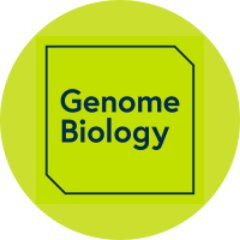
@GenomeBiology
Tweets about latest articles in the journal Genome Biology, conferences & more. Part of @SpringerNature . Also read our blogs ().

@GenomeBiology
Tweets about latest articles in the journal Genome Biology, conferences & more. Part of @SpringerNature . Also read our blogs ().